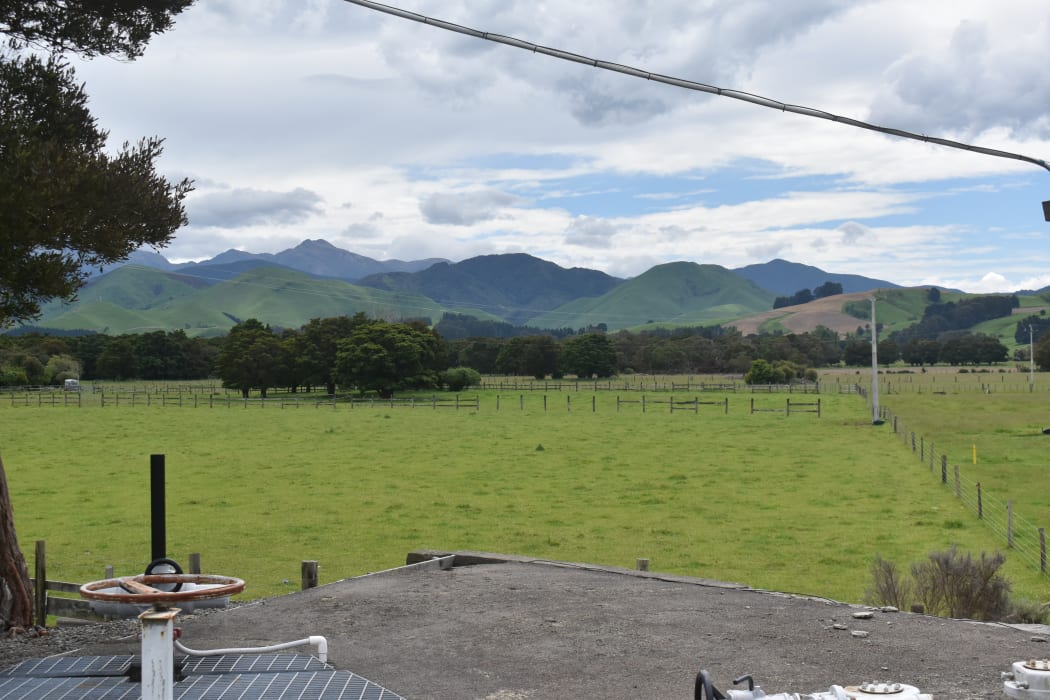Masterton District Council [MDC] has bought 33 hectares of land next to the Kaituna Water Treatment Plant to future-proof options for ensuring water resilience for Masterton.

A view of the land purchased, looking out from the Kaituna Water Treatment Plant. Photo: GRACE PRIOR / WAIRARAPA TIMES-AGE
The land was bought at auction for $2.82 million and the purchase is loan-funded.
Plans are yet to be drawn up but the council has provision in its Long-Term Plan [LTP] for $7.5m to be spent in 2023/24 expanding water storage at Kaituna to 40 days' supply.
The town currently has just three days of water storage and a per capita rate of daily use much higher than Wellington's.
MDC said the newly purchased land would enable to council to expand water supply at Kaituna to 40 days' supply.
Mayor Lyn Patterson said the purchase of the land was prudent.
"Water resilience is a priority issue for the council and while plans for additional storage are not finalised, acquiring this land gives us options for the future.
"We need to take these opportunities when they come up.
"We are working through the best means of ensuring water resilience for our community and owning this land means we retain flexibility in our solutions."
Councillors approved the land purchase unanimously during the public excluded part of a full council meeting on 27 October.
The council's LTP states that, given consent conditions, demand for water can exceed MDC's capacity to supply water over hot, dry summer periods and that rapid population growth could add to these pressures.
Previously, the council had also supported the development of Wairarapa Water's community reservoir proposal north of Masterton through provision of a loan of up to $1m.
However, after 20 years in the pipeline, the Wairarapa Water project was abandoned in September.
This was due to consenting challenges in the rapidly changing environmental planning framework area.
Each year, MDC supplies more than 4.4 billion litres of treated water to the people of Masterton.
The water goes to a population of about 20,000 residential consumers as well as businesses, including those in the Waingawa industrial estate, south of Masterton.
The water is not pumped from the river but siphoned.
Siphoning involves using the hydrostatic pressure of the water and gravity to get it up out of the river and have it flow down the 5km concrete pipe to the water treatment plant.
Air is taken out of the pipe at several points along the line to help maintain a full pipe, necessary for the siphoning process.
Siphoning is a highly efficient way of moving the water and uses significantly less energy than pumping.
This reduces both costs and energy consumption.
When water first arrives at the treatment plant, it goes into three large storage ponds.
These can hold about three days' supply of water for Masterton - 20 million litres each.
If the ponds are full, the water arriving from the intake is returned to the river.
If the water arriving is particularly muddy or dirty, because of flooding, for instance, it may affect water already in the storage ponds, so it is also diverted back out to the river.
Keeping water in the ponds as clear as possible minimises the amount of chemical that needs to be used in the treatment process.

Local Democracy Reporting is a public interest news service supported by RNZ, the News Publishers' Association and NZ On Air.

